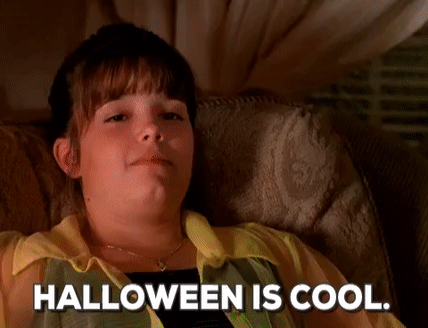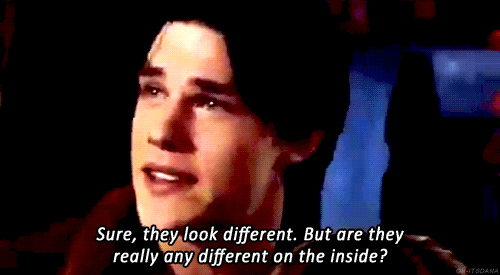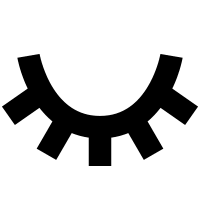
Gif Source: Giphy
If you’re like me, you have a special place in your heart for the Halloweentown movies and make a point to binge-watch them every year. A few years ago, during my annual Disney Spooky Movie Marathon™, I was hit with a realization. The entire Halloweentown series is a metaphor for the history of race relations in America.
In the 1st installment of the Halloweentown films, our main character travels to and from Halloweentown through a portal that is only meant to be opened on Halloween. As a metaphor for segregation, Halloweentown has been separated from the human world due to the fear that humans have of the supernatural beings that reside in Halloweentown.
The premise of the sequel, Halloweentown II: Kalabar’s Revenge, is that the movie’s main antagonist turns every party-goer at a human world Halloween party into what they’re dressed up as because he’s offended and tired of humans mocking supernatural beings. As a nod to both minstrelsy and cultural appropriation, humans didn’t understand why their costume choices were offensive, so he decided to let them experience what it feels like to actually be one of them and the humans hated it.

In Halloweentown High, the 3rd film in the series, teens from Halloweentown lie and say they are exchange students from Canada and wear human disguises in order to attend a human world high school so that Marnie, the main character, can prove to the Halloweentown council that humans have changed and there’s nothing to worry about in an attempt to alleviate restrictions on the passage between the human world and Halloweentown.
Throughout the film, the main characters are followed by knights who live in the human world and who seek to destroy anything magical out of fear. In the end, the students’ disguises are taken off and their friends accept them for who they truly are and recognize that they should be treated the same. The main topics covered throughout this film are assimilation, fear, ignorance, and biases. With phrases like “see, humans really have changed” when humans finally accept their supernatural counterparts, “I’m surprised the ring fits” when the audience discovers (spoiler alert) that one of the main, beloved human characters is the knight who has been following them throughout the film, “send them back to where they came from” and “it’s us or them”, this film was a bit more on the nose than the previous films in the series.

Finally, the fourth and final film in the series, Return to Halloweentown, handles the topics of integration into schools and systemic racism. Marnie gets accepted to Witch University, a college in Halloweentown. By this point, the portal is open and Witch University is allowing students without magical powers to attend. The dominion, a group of already powerful and rich people seeking more power because they think it would be best for everyone if people like them were in power, is at work in the background throughout the film and even has some of the professors at the university working for them. Because the use of magic is prohibited in order to have a level playing field with the students who don’t have magic, the privilege is emphasized when the daughters of the dominion still use their powers without repercussions.
It’s totally possible that I could be reaching, but as I’ve gotten older, these metaphors stand out to me when I watch these films so much more now and I just had to share because it’s pretty cool that Disney continues to find ways to address serious topics in ways that are easily digestible. They have mastered putting the medicine in the candy. Happy Halloween!
